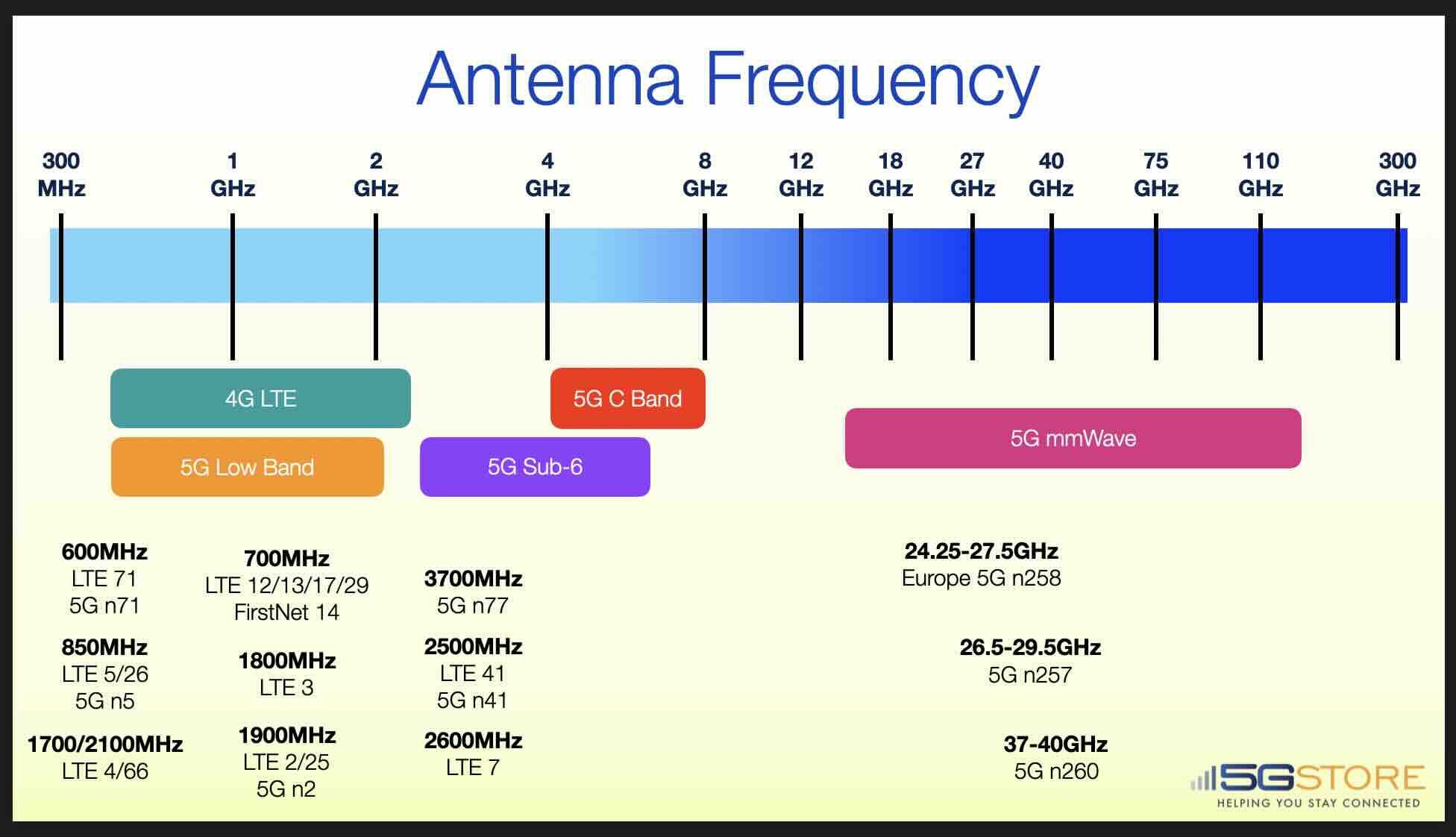


Antennas play a critical role in the transmission and reception of cellular signals. They are designed to emit or receive electromagnetic waves, which carry information such as voice, data, and video, over the air. In the case of cellular networks, antennas are used to communicate between the mobile devices and the base stations. When you make a call or send a message on your smartphone, your device sends the signal to the nearest base station via an antenna, which then relays the signal to its destination.
But what about antenna frequencies? How do they impact cellular communication?
LTE (Long-Term Evolution) and 5G (5th Generation) cellular frequencies are used for wireless communication over cellular networks. LTE and 5G use various frequency bands depending on the region and the cellular operator. Generally speaking, LTE uses lower frequencies than 5G. Some are similar however, but are expanded to include additional frequency ranges (e.g. LTE Band 71 and 5G Band 71). It's important to note that frequency bands used by LTE and 5G vary between countries and network operators.
The use of different frequency bands can impact the speed, coverage, and penetration of wireless signals. Higher frequency bands can provide faster data speeds and lower latency, but they may have lower coverage and penetration compared to lower frequency bands. This is why it's important to choose the right antenna frequency for your specific use case. Whether you're building a cellular network, designing a wireless device, or simply trying to improve the signal quality on your smartphone or modem, understanding antenna frequencies is essential.
At 5Gstore.com, we specialize in providing high-quality antennas for cellular networks, WiFi, and GPS. Our antennas are designed to meet the specific needs of your project, whether you're looking for a low-cost solution for a small deployment or a high-performance antenna for a large-scale network.
LTE Band 12 operates in the range of 699 MHz to 798 MHz. It is used primarily in North America by several carriers including AT&T. One of the main advantages of Band 12 is its ability to penetrate buildings and other obstacles more effectively than higher frequency bands. This makes it well-suited for providing coverage in urban and indoor environments. In addition, Band 12 can provide coverage over larger geographic areas due to its lower frequency, making it useful for rural areas as well.
LTE Band 13 operates in the range of 746 MHz to 757 MHz for the uplink and 776 MHz to 787 MHz for the downlink. It has the ability to provide high-speed data services over long distances. This makes it well-suited for rural and remote areas, where there may be fewer cell towers and a greater need for long-range coverage. Additionally, Band 13 has excellent building penetration characteristics, which make it useful for providing indoor coverage.
Band 13 is currently used by several cellular network operators in North America, including Verizon Wireless, which holds the largest amount of spectrum in this band. Verizon has used Band 13 to provide LTE coverage to rural areas and to improve indoor coverage in buildings.
LTE Band 17 operates in the range of 704 MHz to 716 MHz for the uplink and 734 MHz to 746 MHz for the downlink. Band 17 is currently used by several cellular network operators in North America, including AT&T, which holds the largest amount of spectrum in this band. AT&T has used Band 17 to improve coverage in rural and suburban areas, and to provide better indoor coverage in buildings.
LTE Band 29 operates in the range of 717 MHz to 728 MHz for the uplink and 746 MHz to 757 MHz for the downlink. It is currently used in North America, by operatore like AT&T, which holds the largest amount of spectrum in this band. AT&T has used Band 29 to improve coverage and capacity in urban areas, as well as to provide better coverage in suburban areas.